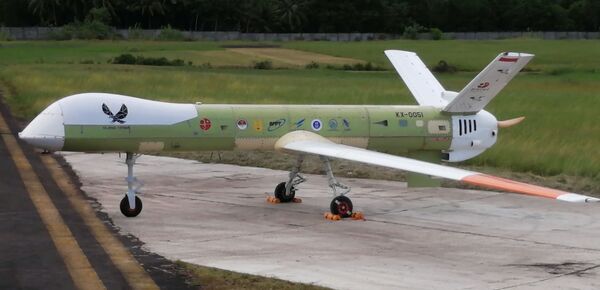
The Elang Hitam UAV seen here just before its first flight attempt. The programme has since been diverted for civil applications. (Source withheld)
Indonesia will no longer be developing its Elang Hitam (Black Eagle) medium-altitude long-endurance (MALE) unmanned aerial vehicle (UAV) programme as a military platform.
Chairman of the country's National Research and Innovation Agency (BRIN) Laksana Tri Handoko confirmed with Janes on 15 September that resources from the project, which would have armed the country's air force with indigenously developed strike-capable UAVs, are being diverted towards civil initiatives instead.
His confirmation corroborates information that has been provided to Janes by industry sources since mid-2022, indicating that the Elang Hitam is at risk of being continued as a military project.
This effectively suspends the country's national ambition of developing a home-grown MALE UAV with military applications, which has been listed as one of the ‘strategic projects' of President Joko Widodo, as outlined under the third Presidential Decree of 2016.
An Indonesian private-public consortium, to develop the Elang Hitam programme, was first established in 2017. Besides fulfilling the Indonesian Air Force's (TNI-AU's) long-standing requirement for rapidly deployable strike-capable UAVs, the Elang Hitam would also have been a testbed for indigenously developed UAV control-and-combat systems.
The consortium consisted of the Indonesian Ministry of Defence (MoD), the TNI-AU, state-owned aerospace company PT Dirgantara Indonesia (PTDI), national defence electronics company PT Len Industri, the National Institute of Aeronautics and Space (LAPAN), the Indonesian Agency for the Assessment and Application of Technology (BPPT), and the Bandung Institute of Technology (ITB).
The first prototype of the Elang Hitam was implemented at PTDI's facilities in Bandung on 30 December 2019, and plans were subsequently made to test various indigenously developed weapons and UAV control systems on the platform and its successive prototypes.
Looking to read the full article?
Gain unlimited access to Janes news and more...







